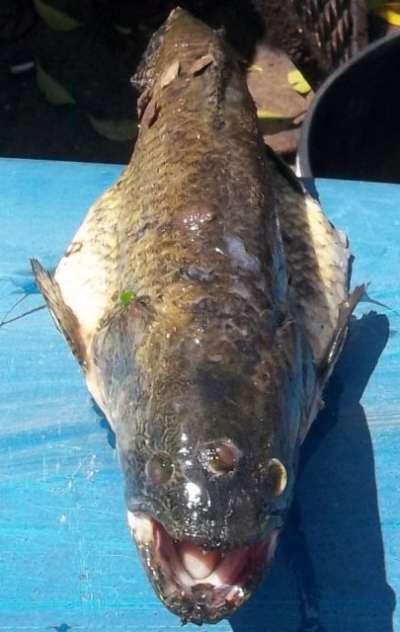A monstrous mutant fish with 3 eyes: it is not Blinky, the orange transgenic fish swimming in the waters near the Springfield nuclear power plant, emblematic victim of Mr. Burns' indifference towards the environment, but a real fish, in the flesh and ... fishbones! It was caught by some fishermen on a lake in the province of Cordoba in Argentina, Chorro de Agua Caliente. And, coincidentally, the lake where he was captured is near the Embalse nuclear power plant.
He is about to end up run over, his mother saves him
A monstrous mutant fish with 3 eyes: it is not Blinky, the orange-colored transgenic fish that swims in the waters near the nuclear power plants of Springfield, emblematic victim of Mr. Burns' indifference towards the environment, but a real fish, in flesh and ... bones! It was caught by some fishermen on a lake in the province of Cordoba in Argentina, Chorro de Agua Caliente. And, coincidentally, the lake where he was captured is near the Embalse nuclear power plant.
In addition to a strong interest on the web, the capture of the "triophthalmic" animal raised great concern among the local population, who began to question the reasons for the malformation, soon finding the possible culprit in the nuclear power plant. “We were very surprised to catch this specimen. Since it was dark, we didn't notice anything at first, but then, after lighting it with a flashlight, I realized it had a third eye, ”Julián Zmutt told a radio station about his unusual discovery.
And if the connection of the malformation of the Argentine three-eyed fish with the nearby nuclear power plant is inevitable but to be verified, the fact that exposure to radiation causes mutations is a fact. Another bizarre animal has also recently made headlines in foreign newspapers. It is an earless bunny born near Fukushima, filmed by the Japanese news agency Jana News. The animal was born without ears on May 7, right on the outer border of the 30-kilometer forbidden zone around Fukushima. And it is only the latest testimony of the many images of anomalous and deformed creatures, including giant lilies, grasshoppers and tailless mice, which continue to arrive from Japan.

And the thought can only run fast to the "Red Forest" of Chernobyl, which was located 2 km west of the former plant, known before the accident as the Absinthe Forest. Its 400 hectares of forest were hit in full by one of the radioactive trails and took on an intense rusty red color before drying. They were later buried as best they could to hide the tangible evidence of the disaster and stem the dangers. But life did not go completely extinct, as, indeed, in the whole area of the disaster: plants and wild animals continued to be born and grow. Unfortunately often deformed and mutated. In fact, in Chernobyl there are trees transformed into creeping and twisted shrubs, pines with buds up to 14 cm long due to radiomorphism, birds without tail feathers, colonies of moose, horses, wolves and other mammals in which significant mutations of the DNA. And again albino swallows, foals whose legs fork below the knees, pigs without eyes and two-headed calves.
Yet, there are still those who persist in feeding us the story of the “safe” nuclear power, as we recently saw at the announcement of the energy upgrade of the atom in the Czech Republic.


























